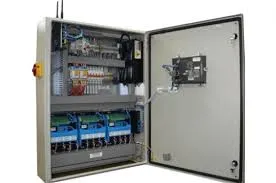Butyl Rubber Roofing A Comprehensive Overview
Butyl rubber roofing is a popular choice among commercial and residential builders for its unique properties and durability. This synthetic rubber is produced from the polymerization of isobutylene, with a small amount of isoprene. Its exceptional qualities make it an ideal material for roofing applications, particularly in flat or low-slope roofs.
One of the most notable features of butyl rubber roofing is its superior waterproofing capabilities. The material is inherently resistant to water, which makes it an excellent choice for areas prone to heavy rain or snowfall. This attribute significantly reduces the likelihood of leaks and water damage, which is a common concern in roofing systems. Additionally, butyl rubber roofing is resistant to various environmental factors, such as UV rays and extreme temperatures, allowing it to maintain its integrity over time.
Another advantage of butyl rubber roofing is its flexibility. Unlike traditional roofing materials, butyl rubber can easily expand and contract with temperature fluctuations. This elasticity ensures that the roofing system can adapt to changing conditions without cracking or peeling. Moreover, this flexibility allows for easier installation, making it a favored option among contractors.
butyl rubber roofing

Furthermore, butyl rubber roofing has excellent adhesion properties, which enhances its performance and lifespan. The material can be adhered directly to the roofing substrate, creating a robust bond that minimizes the risk of detachment during adverse weather conditions. This strong adhesion also contributes to the overall energy efficiency of the building. Because the roofing system is tightly sealed, it helps regulate indoor temperatures, reducing the need for excessive heating or cooling.
In terms of maintenance, butyl rubber roofing requires minimal upkeep. The material is resistant to mold, mildew, and algae, which can plague other roofing types and necessitate frequent cleaning and treatment. A simple inspection and periodic cleaning are usually sufficient to keep a butyl rubber roof in optimal condition. This low maintenance requirement can lead to significant cost savings over the lifespan of the roof.
While butyl rubber roofing boasts numerous benefits, it is important to consider potential drawbacks. The initial cost of installation can be higher than that of traditional roofing materials. However, many property owners find that the long-term benefits, including durability and reduced maintenance costs, outweigh the initial investment. Additionally, the material's lifespan can exceed 20 years with proper installation and care, making it a worthwhile consideration for many applications.
In conclusion, butyl rubber roofing presents an excellent option for those seeking a reliable and durable roofing solution. Its waterproofing capabilities, flexibility, and low maintenance requirements make it well-suited for various climates and building types. Despite the higher initial costs, the longevity and performance of butyl rubber roofs can result in substantial savings over time. As the market for sustainable and efficient building materials continues to grow, butyl rubber roofing stands out as a robust choice that meets the demands of modern construction while ensuring long-term protection for structures.
-
XIANGFAN Rubber Tape-Ultimate Solutions for All Your Insulation NeedsNewsJun.24,2025
-
XIANGFAN Rubber Tape-Protection for Industrial and Residential ApplicationsNewsJun.24,2025
-
XIANGFAN Rubber Tape: Superior Safety and Sealing for Demanding EnvironmentsNewsJun.24,2025
-
XIANGFAN Rubber Tape: Reliable Solutions for Every Electrical ChallengeNewsJun.24,2025
-
XIANGFAN Electrical & Industrial Tape: Powering Reliability Across IndustriesNewsJun.24,2025
-
XIANGFAN Electrical & Industrial Tape: Excellence in Every ApplicationNewsJun.24,2025
